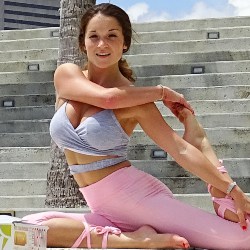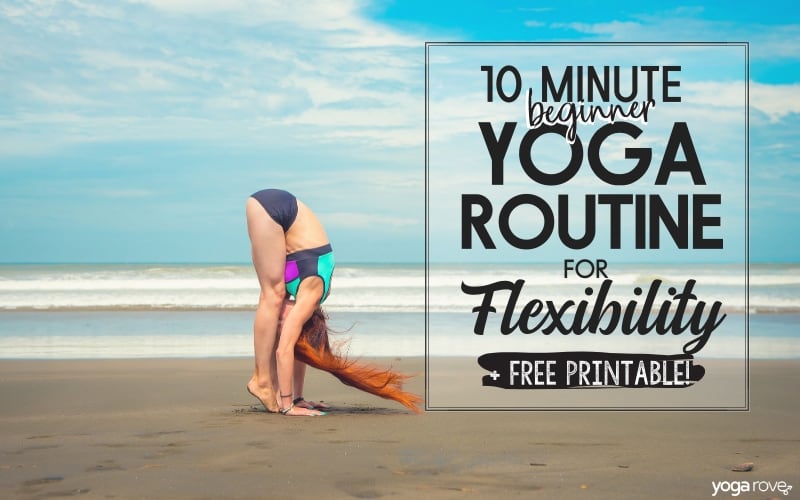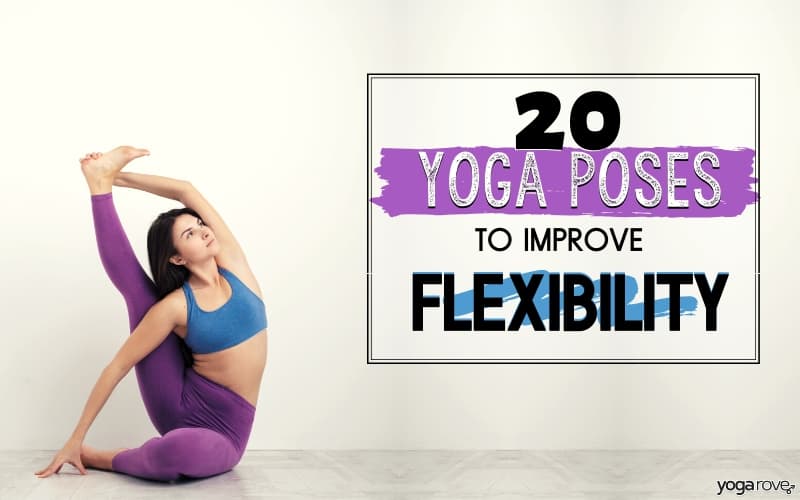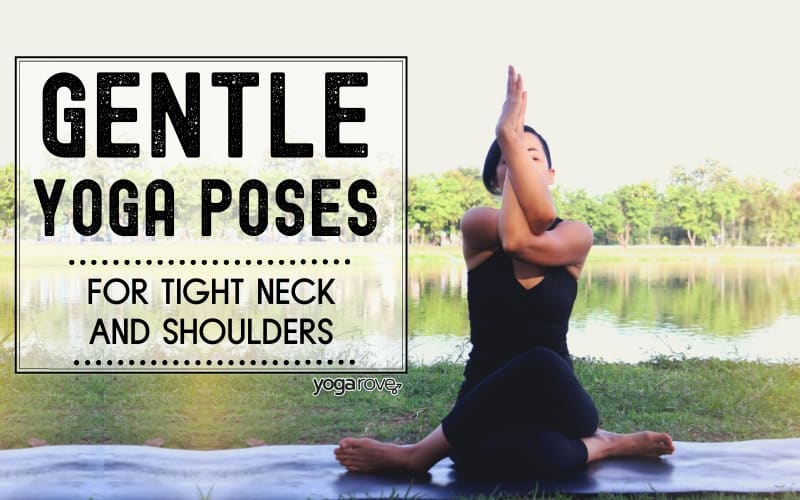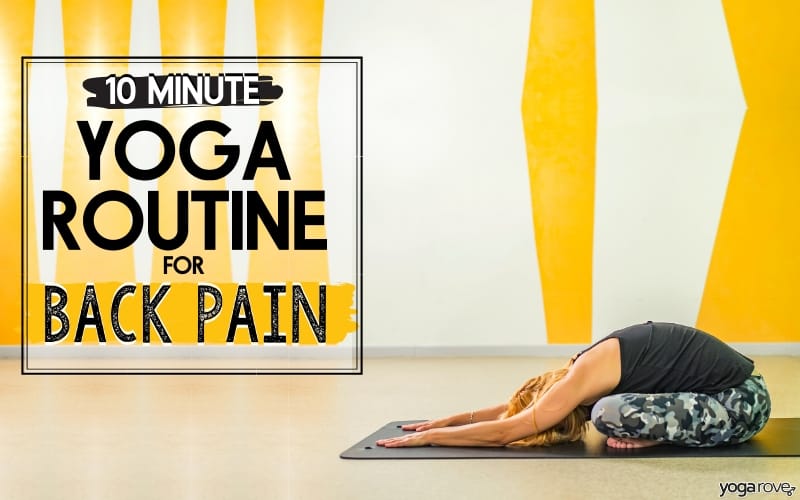This post may contain affiliate links. Please read our disclosure for more info.
Whether you’re a world class athlete or just starting on your fitness journey, improving your flexibility is something you need to incorporate into your routine.
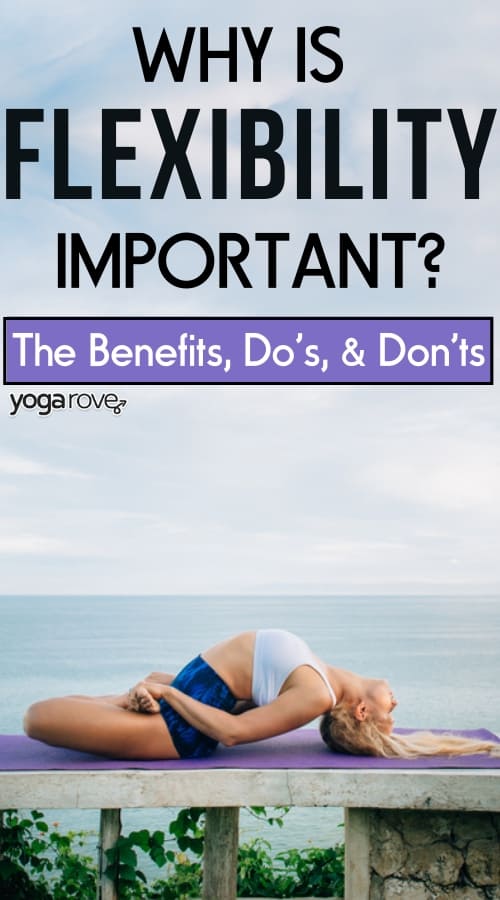
Why is flexibility important? Better flexibility means a better range of motion, which prevents injuries and allows you to achieve the maximum results that you’re putting into your fitness routine with weight training and cardiovascular effort. Flexibility allows you to benefit most from the rest of your physical activities.
Think of flexibility as the 3rd point of your fitness triangle: strength, cardio, and flexibility are the 3 points that make up a well-balanced athlete, and to achieve a balanced triangle, you’ve got to work them all equally.
What’s ROM, and Why Should I Care?
Range of motion, or ROM for short, “is a measurement of the distance and direction a joint can move to its full potential” – it’s the degree of movement within your joints. Range of Motion is not something your body uses only during physical exercise – it’s important in everyday activities, from picking up your kids to being able to reach overhead to put a dish away in a cupboard.
ROM is one of those things that we generally take advantage of, and only recognize its importance when it’s gone (such as in old age, or when we’re injured). Fortunately, continual practice with flexibility and dynamic movement can foster a healthy range of motion that will keep your joints young and your muscles stable!
What Can Better ROM & Flexibility Do for You?
1. Flexibility for Better Mobility
First, let’s differentiate between flexibility and mobility:
Flexibility= how much a muscle can lengthen
Mobility= the ability for a joint to move through a range of motion – it’s how much you can perform a movement without restriction
Flexibility is not the same as mobility, but it is a contributing factor to mobility, which is why working on your flexibility directly helps your mobility. However, good flexibility does not always equate with mobility, since mobility also entails strength, coordination, and balance.
If you work out a lot, your muscles probably have the strength to support a lot of potential movement. However, if you don’t stretch, your joint movement will be restricted by the strong muscles surrounding it – for your own protection.
Basically, if your muscle isn’t aware that you have the range of motion to achieve something, it’s going to keep you from doing it because it thinks it’ll cause injury. However, if you work on your flexibility, your muscle memory will acknowledge that you have an increased range of motion, and therefore will not contract so tightly during movement within the joint.
2. Flexibility for Injury Prevention
Muscle and joint injuries happen when you bypass your range of motion. By increasing your range of motion, you decrease your chances of injury.
Think of rubber bands: you have 2 of the same diameter, but one is the thinner kind, and the other the thicker. You place your hands inside each of them, and pull your hands apart. The thicker one has less flexibility, and will snap first (a rubber band’s version of pulling a groin or tearing a tendon).
Both rubber bands in this case technically have the same “mobility” (can move in the same directions), but the thicker band did not have the same flexibility as the thinner band. Stretching your muscles allows your muscle fibers to lengthen, so that your range of motion – a combination of flexibility and mobility – increases, and therefore prevents injuries such as pulling a muscle or tendon.
3. Flexibility for Correct Posture & Alignment
If your tendons and muscles are too tight, it could literally affect your skeletal structure. Think of people who spend all day hunched at a desk: their muscles get so used to that hunched position, that they lose the flexibility necessary for their muscles to extend and allow the spine to sit upright!
Picture a beaded bracelet on an elastic string: if you stick 20 beads that are 1cm long on a 15cm long elastic string, the beads will curve inward because the string isn’t elongated enough to fit the 20cm total. However, if you pull on both ends of the string so that it lengthens to 20 cm long, the beads will sit in a perfect straight line.
When you lengthen the muscle fibers, you allow your bones to align in the correct posture for your body.
4. Flexibility helps Build Muscles Better
Have you ever heard of how a fish in a tank will only grow as large as the tank, but if moved to another larger tank, it will grow bigger? Your muscles are kind of the same. If they don’t have the space to grow, no matter how much work you put into them, they physically can’t!
A common example I use for my yoga students is (sorry vegetarians and vegans!) to take a look at a chicken breast – you know that thin, white film that you see stretched over the breast? That’s the myofascial tissue – the same tissues that you have stretching over your muscles.
When you fail to stretch the tissue that encases your muscles, you keep the muscles from being able to grow, whether it’s thicker or longer that you want them to grow. That’s why stretching is super vital for any kind of physical improvement!
5. Flexibility in the Body = Flexibility in Mind: Improved Stress Management
Achieving flexibility takes a calm patience that other types of exercise do not usually require, and practicing your stretching fosters your mental ability to stay calm.
Where intense weight lifting and aggressive cardio are often used to blow off steam as stress reduction (personally, I love a kick-butt boxing class after a particularly stressful day), flexibility can be used to harness your “zen,” and lessen the actual need for such stress reduction.
When done correctly, stretching requires deep breathing, which has scientifically been proven to reduce blood pressure, stress, and anxiety. This practice allows your body to cool down, but also gives your mind a “chill pill.”
Is There Such Thing as Too Much Flexibility?
Absolutely – and it can be just as detrimental as too little flexibility! When you’re too flexible without the muscle control to support it, your joints are unstable and the muscles are unable to hold the positions that your range of movement support.
When you stretch, you should also be strengthening the muscles that support the bones and joints within that stretch. When you fail to train the muscle strength to match the muscle’s flexibility, your tendons and muscular tissues resemble that of a rubber band that’s been stretched too much for too long, and cannot return back to its normal shape.
What if you’re born with hyperextended joints or hyper-mobility? Were you the envy of your friends when you were young because of how easily you could contort yourself into circus-like positions? The damage can’t be reversed, but it can be prevented – all you need to do is strengthen the muscles around the hyper-flexible joints.
Awareness is key. If you’ve hyper-extended your muscles and tendons over time, your joints will send less and less signals to your brain regarding being in the “right” and “wrong” positions. You must train your muscle memory to stay in the correct alignment, so that when you enter the hyper-extended positions, feedback is sent to the brain in the form of discomfort, and you can adjust accordingly.
Is there More than One Kind of Flexibility?
Yes! There are 2 forms: dynamic flexibility and static flexibility.
1. Dynamic Flexibility: involves motion. This is the kind of flexibility you should be working when you warm up.
2. Static Flexibility: is flexibility without speed or movement as a factor. This is the kind of flexibility you should be working on when you are cooling down.
Is there More than One Kind of Stretching?
Yes – some stretching can help you achieve your flexibility goals, while other kinds should be avoided to prevent injury.
1. Dynamic Stretching (good)
This is how your dynamic flexibility is achieved. This type of stretching is best for warming up prior to strength training or cardio. It involves controlled movement with little to no holds.
Examples: gentle hip swings, controlled arm swings, torso twists, lunge twists, even a few Vinyasa Flows are good.
2. Static Stretching (good)
This is how you achieve static flexibility. It’s best for cooling down after a workout. Static stretching without any warmup (either dynamic stretching before, or cardio before) is not recommended!
Static stretches are held for 30 seconds or more, and are entered into slowly and gently. The breath is very important in these positions, as deep breaths calm the nervous system, and thus allow the mind to tell the body it’s okay to go deeper.
In a static stretch, you are stretching the muscle to it’s farthest point, and then staying there for 30 seconds or more. Static stretching can be broken down further into active and passive static stretching:
- Active static stretch: you yourself are responsible for lengthening the muscle to its maximum, then using your own strength to hold it there.
This stretch requires a bit of awareness on your end. Usually when we enter deep poses, we’ll experience a bit of a “fight or flight” reaction, where we feel extreme discomfort once reaching a certain point.
It’s at this point that you should back off slightly. However, sometimes this is just your nerves sending that signal to your brain what we talked about earlier about “not having the range of motion to enter a posture due to a lack of strength in the muscle” – it could just be your brain being unfamiliar with the pose.
If, after 30 seconds or so, you feel like you can go a little deeper into the stretch, go ahead, and hold the deeper position for 30 seconds more. Just make sure to exit the pose gently.
2. Passive static stretch: an outside force (such as a physical therapy device, a teacher, or physical therapist) holds the joint or muscle in its extended position while you allow your muscles to relax.
3. Ballistic Stretching (bad)
Avoid this, as it greatly increases the chance of pulling or straining a muscle if you overdo it.
Ballistic stretching is an active stretch where you use bouncy or jerky movements to quickly enter and exit the extension of the stretch, such forward folding to touch your toes, and bouncing your torso upward and downward in an effort to get closer to the floor. Many doctors and organizations advise strongly against this type of stretching.
How Can You Improve Your Flexibility?
The same way you improve anything – practice!
To achieve the best results in your flexibility, it’s best to combine both dynamic and static stretching. According to the American Council on Exercise, you should be stretching every day (even if just for 5 or 10 minutes).
The DO’s and DON’T’s of Stretching:
Do:
- Use dynamic movements prior to static stretching
- Enter static stretches gently
- Listen to your body – do not follow the “no pain no gain” rule! If it hurts, back off.
- Breathe deeply
- Keep it even: focus on flexibility throughout the entire body, not just in certain areas.
- Cross train and mix it up: your muscle memory gets used to what you’re doing if you repeat it for a while. Mix up your stretches as well as your general physical activity to ensure you’re always improving.
Don’t:
- Go into it cold. Never enter a static or holding stretch without first warming up
- Push yourself past your limits – “no pain no gain” is NOT the name of the game here!
- Try to achieve difficult stretches without being flexible enough for the basics first
- Forget to breathe!
- Focus on only a few areas of flexibility – just because you don’t think leg flexibility is as important as upper back flexibility does not mean your body agrees! Remember the law of compensation – if you’re lacking in one area of strength or flexibility, your body will most certainly compensate for it in another joint or muscle.
You don’t need to take crazy yoga classes to achieve flexibility – all you need is a few minutes of time and awareness of your own body.
There are tons of different videos available online that focus on improving flexibility. This video by PsycheTruth is great for people who are just starting to focus on flexibility.
You can also check out these articles on our site for improving flexibility:
- 20 Beginner Yoga Poses to Improve Flexibility
- 10 Minute Beginner Yoga Routine for Flexibility
- How to Use Yoga Blocks to Improve Strength And Flexibility
Additional Ways to Improve your Flexibility
Myofascial release is used to essentially massage the tight tissues that surround your muscles. A physical massage is one of the best (and best feeling) ways to achieve myofascial release, but it can get pretty costly.
You can also use a foam roller or lacrosse ball to release tension throughout your muscles yourself. In addition, there are many “stretch clinics” or gyms that offer “stretch sessions” that can achieve the same results for half the cost of a massage.
Why Bother with Flexibility?
Working on your flexibility elongates the muscles and joint fibers in order to achieve better performance and push your physical limits further. There are plenty of other benefits you may reap as a result of continued stretching:
1. The long and lean aesthetic: you’ve seen all those ballerinas and yogis – they have gorgeous, sculpted, lean and long muscles – it’s because they focus on flexibility in addition to their strength and cardio.
2. Level up your physical performance: increase your competitive edge by creating more space in your muscle fibers for your muscles to grow.
3. Stay young and keep up with family: do you have kids or grandkids (or hope to soon)? Don’t you want to be able to spend time playing with them, instead of just watching them?
4. Reduced back and joint pain: a lot of pains come from a lack of flexibility as a result of not being able to hold the bones in the correct position, especially back pain. Working on flexibility in the hips and shoulders almost always decreases back pain.
5. Improved circulation: when stretching, you’re creating more space within your joints and muscles, which creates for easier blood flow throughout the entire body.
6. Reduce stress: tense muscles = tense mind. Just as stretching creates space for blood to flow within your joints, it also creates space in your mind.
7. Just feel better: people who take up a regular stretching or yoga practice will almost never tell you that they don’t feel better or that they regret it. Try it for 7 days straight, and you will understand!
If you are completely new and don’t know where to start, try out some of our beginner yoga routines in our Free Resource Library. You can sign up below for absolutely free and have access to tons of routine printables!
If you’re completely new to stretching or yoga and need some help getting started, check out these related articles:
- What is the First Yoga Pose You Should Learn?
- 20 Yoga Poses for Complete Beginners (+ Free Printable)
- The 20 Minute Yoga Routine Every Beginner Needs + Free PDF
- 100 Yoga Quotes for Inspiration and Motivation (with images)
- Can You Do Yoga Every Day?
Previously a dancer, Ashley has been practicing yoga for over 15 years and teaching for 5.
She balances an executive-level “corporate” position during the day with healthy, mindful wellness practices in her free time to stay grounded; she lives on celery juice and cold brew, and can’t live without her dark chocolate!


